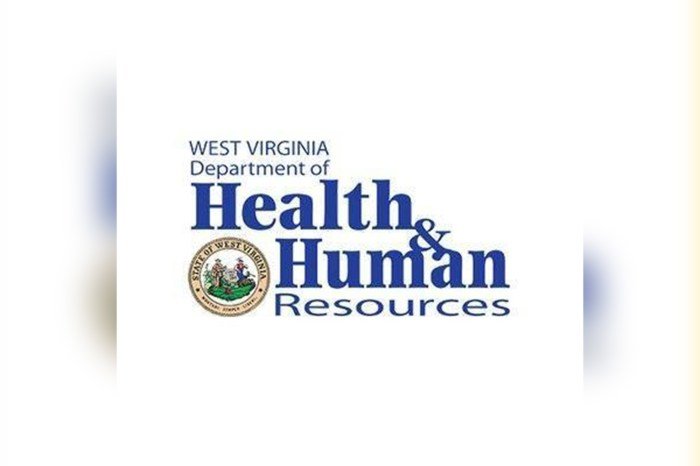Health and Human Resources WV stands at a critical juncture, grappling with a complex healthcare landscape. West Virginia faces unique challenges, including a high prevalence of chronic diseases, limited access to healthcare providers, and a shrinking workforce. This dynamic environment requires innovative solutions to address the pressing needs of the state’s population and its healthcare system.
This exploration delves into the multifaceted aspects of healthcare and human resources in West Virginia, examining the current state of affairs, analyzing key challenges, and exploring potential solutions. We will investigate the impact of rurality, socioeconomic factors, and workforce shortages on healthcare access and outcomes.
Additionally, we will explore innovative strategies for addressing these challenges, such as workforce development programs, recruitment incentives, and technology-driven solutions.
Healthcare Landscape in West Virginia

West Virginia faces significant challenges in providing accessible and high-quality healthcare to its residents. Despite efforts to improve the system, the state consistently ranks among the lowest in national health rankings.
Challenges and Opportunities
West Virginia’s healthcare system faces several challenges, including a shortage of healthcare providers, particularly in rural areas, limited access to specialized care, high rates of chronic diseases, and a significant uninsured population. These challenges contribute to poorer health outcomes and higher healthcare costs compared to other states.
However, there are also opportunities for improvement. The state has implemented initiatives to address these challenges, such as expanding access to telehealth services, promoting preventative care, and investing in workforce development programs to attract and retain healthcare professionals.
Comparison with Other States
West Virginia’s healthcare system differs significantly from those in neighboring states. For example, compared to Virginia, West Virginia has a lower density of physicians and hospitals, particularly in rural areas. This disparity contributes to longer wait times for appointments and limited access to specialized care, especially for those living in rural communities.
West Virginia also has a higher uninsured rate compared to neighboring states, such as Ohio and Kentucky. This lack of health insurance coverage often leads to delayed or forgone care, resulting in poorer health outcomes and increased healthcare costs.
Impact of Rurality and Socioeconomic Factors
West Virginia’s predominantly rural landscape and high poverty rate significantly impact healthcare access and outcomes. Rural communities often face challenges in attracting and retaining healthcare providers, leading to limited access to primary and specialized care. Furthermore, socioeconomic factors such as poverty, low educational attainment, and unemployment contribute to higher rates of chronic diseases, such as diabetes, heart disease, and obesity.
These conditions often require ongoing and expensive treatment, further straining the healthcare system.
Role of Government and Private Initiatives
The West Virginia government has implemented various initiatives to improve healthcare delivery, including expanding Medicaid coverage, investing in telehealth infrastructure, and supporting workforce development programs to address the healthcare provider shortage. Private initiatives, such as community health centers and non-profit organizations, also play a vital role in providing healthcare services to underserved populations.
These organizations often offer affordable or free care, focusing on preventive services and health education.
Human Resources in Healthcare

The healthcare industry in West Virginia, like many others across the nation, is grappling with a number of significant human resources challenges. These challenges have a profound impact on the quality and accessibility of patient care, as well as the long-term sustainability of the state’s healthcare system.
Workforce Shortages and Their Impact
The shortage of healthcare professionals in West Virginia is a pressing issue, contributing to a complex web of challenges within the healthcare system. This shortage is particularly acute in rural areas, where access to healthcare is already limited. The aging population and increasing demand for healthcare services further exacerbate this issue.
- Increased Wait Times:Shortages of nurses, physicians, and other healthcare professionals lead to longer wait times for appointments and procedures. This delay in receiving care can have negative consequences for patient health outcomes, particularly for those with urgent or chronic conditions.
- Limited Access to Care:In some areas, the lack of healthcare professionals makes it difficult for individuals to access essential medical services. This can lead to individuals forgoing necessary care or traveling long distances to receive treatment, potentially delaying diagnosis and treatment of health issues.
- Burnout and Stress:Existing healthcare professionals are often overworked and understaffed, leading to increased stress and burnout. This can result in decreased job satisfaction, increased turnover rates, and ultimately, a decline in the quality of patient care.
Recruitment and Retention Challenges
Attracting and retaining qualified healthcare professionals in West Virginia is a significant hurdle. Several factors contribute to these challenges, including:
- Limited Compensation and Benefits:Compared to other states, West Virginia often offers lower salaries and benefits for healthcare professionals. This makes it difficult to compete with other states for talent, particularly for highly skilled and specialized professionals.
- Rural Location and Lifestyle:Many healthcare professionals prefer to live and work in urban areas with access to amenities and cultural attractions. West Virginia’s rural nature and limited urban centers can be a deterrent for some professionals, particularly younger generations.
- Lack of Opportunities for Professional Development:Limited opportunities for professional growth and advancement can make it challenging to retain healthcare professionals. This is especially true for highly motivated individuals seeking to advance their careers.
Innovative Strategies for Addressing Healthcare Human Resources Challenges
West Virginia is implementing a range of innovative strategies to address its healthcare human resources challenges. These initiatives aim to attract and retain qualified healthcare professionals, improve workforce development, and enhance the overall healthcare workforce.
- Workforce Development Programs:The state is investing in workforce development programs to train and educate future healthcare professionals. This includes initiatives like scholarships, loan forgiveness programs, and apprenticeships to encourage individuals to pursue careers in healthcare.
- Recruitment Incentives:West Virginia is offering various recruitment incentives to attract healthcare professionals, such as signing bonuses, relocation assistance, and loan repayment programs. These incentives are designed to make West Virginia a more attractive destination for healthcare professionals.
- Retention Strategies:To retain existing healthcare professionals, the state is implementing strategies like mentorship programs, leadership development opportunities, and flexible work arrangements. These initiatives aim to improve job satisfaction and create a more supportive work environment.
The Role of Technology in Healthcare Human Resources
Technology plays a crucial role in optimizing healthcare human resources and improving workforce management. This includes:
- Talent Management Systems:These systems streamline recruitment, onboarding, performance management, and other HR processes. This allows healthcare organizations to efficiently manage their workforce and allocate resources effectively.
- Telehealth and Remote Care:Telehealth platforms enable healthcare professionals to provide care remotely, expanding access to healthcare services in rural areas and reducing the need for in-person appointments. This can help alleviate workforce shortages and improve patient access to care.
- Artificial Intelligence (AI):AI-powered tools can assist with tasks such as scheduling appointments, managing patient records, and providing clinical decision support. This frees up healthcare professionals to focus on patient care and other critical tasks.
Key Healthcare Initiatives in West Virginia

West Virginia has been actively implementing various healthcare initiatives to address its unique challenges and improve the health of its residents. These initiatives encompass a range of strategies, from expanding access to insurance to promoting preventive care and addressing health disparities.
Medicaid Expansion
Medicaid expansion in West Virginia, implemented in 2014, has significantly increased the number of individuals with health insurance coverage. This expansion has been instrumental in improving access to healthcare services, particularly for low-income individuals and families.
- The expansion has led to a decrease in the number of uninsured individuals in the state, reducing the burden on emergency rooms and hospitals for uncompensated care.
- Expanded Medicaid coverage has improved access to preventive care, such as screenings and immunizations, which has contributed to better health outcomes.
- Studies have shown that Medicaid expansion has led to a reduction in mortality rates and improved overall health status among beneficiaries.
Telemedicine Programs
Telemedicine programs have played a crucial role in expanding healthcare access in West Virginia, particularly in rural areas where access to specialists and other healthcare providers is limited. These programs utilize technology to provide remote healthcare consultations and services, bridging the gap in access to care.
- Telemedicine has facilitated access to specialists, allowing patients to receive consultations without having to travel long distances.
- Telehealth programs have been instrumental in providing mental health services to underserved populations, particularly in rural areas.
- The use of telemedicine has also improved access to chronic disease management services, allowing patients to receive ongoing care from their homes.
Community Health Centers
Community health centers (CHCs) in West Virginia provide essential healthcare services to underserved populations, often located in areas with limited access to traditional healthcare facilities. CHCs offer a range of services, including primary care, dental care, mental health services, and substance abuse treatment.
- CHCs have played a significant role in improving access to healthcare services for low-income individuals, uninsured individuals, and those living in rural areas.
- CHCs provide a comprehensive approach to healthcare, addressing the social determinants of health and offering wraparound services to support patient well-being.
- Research has shown that CHCs have a positive impact on health outcomes, particularly for individuals with chronic conditions.
Public-Private Partnerships
Public-private partnerships have become increasingly important in advancing healthcare innovation and access in West Virginia. These partnerships involve collaborations between government agencies, private businesses, and non-profit organizations to address specific healthcare needs.
- Partnerships between the state government and private insurers have facilitated the development of innovative health insurance programs, such as value-based payment models, which incentivize quality care and cost-efficiency.
- Collaboration between private businesses and healthcare providers has led to the creation of telehealth programs and other technology-driven initiatives, improving access to care and reducing healthcare costs.
- Public-private partnerships have also been instrumental in supporting the development of community health centers and other essential healthcare infrastructure.
Impact of Health on the Workforce

A healthy workforce is a productive workforce. This means that employers have a vested interest in promoting employee health and wellness. A healthy workforce can lead to increased productivity, reduced absenteeism, and lower healthcare costs. This section will explore the connection between employee health and productivity in the workplace, analyze the impact of chronic diseases and health disparities on the West Virginia workforce, and discuss the role of employers in promoting employee health and wellness.
The Connection Between Employee Health and Productivity
A strong connection exists between employee health and productivity. When employees are healthy, they are more likely to be present at work, engaged in their jobs, and able to perform their duties effectively. Studies have shown that healthy employees are more productive, have fewer sick days, and experience higher levels of job satisfaction.
Conversely, unhealthy employees are more likely to experience absenteeism, presenteeism (being at work but not fully productive), and lower job satisfaction. This can lead to decreased productivity, higher healthcare costs, and lower morale.
The Impact of Chronic Diseases and Health Disparities
Chronic diseases and health disparities pose significant challenges to the West Virginia workforce. West Virginia has a higher prevalence of chronic diseases than the national average, including heart disease, stroke, diabetes, and obesity. These conditions can lead to increased healthcare costs, decreased productivity, and premature mortality.
Health disparities also impact the West Virginia workforce. For example, African Americans, Hispanics, and Native Americans are more likely to experience chronic diseases and have limited access to healthcare. These disparities can lead to poorer health outcomes and lower productivity.
West Virginia’s health and human resources department works to ensure access to quality healthcare for all residents. One organization dedicated to providing comprehensive women’s health services is shenandoah women’s health , which serves the Shenandoah Valley region. Their commitment to patient care aligns with the broader mission of West Virginia’s health and human resources department to improve the well-being of all citizens.
The Role of Employers in Promoting Employee Health and Wellness
Employers play a critical role in promoting employee health and wellness. They can implement workplace programs and initiatives that encourage healthy behaviors, such as:
- Offering health insurance plans that cover preventive care and wellness services.
- Providing access to on-site fitness facilities, such as gyms or walking trails.
- Creating a culture that supports healthy eating habits, such as providing healthy food options in the workplace cafeteria.
- Offering smoking cessation programs and other health education initiatives.
- Providing flexible work arrangements, such as telecommuting or compressed workweeks, to help employees manage work-life balance.
Examples of Successful Workplace Wellness Programs, Health and human resources wv
Several successful workplace wellness programs have been implemented in West Virginia. For example, the West Virginia Department of Health and Human Resources offers a variety of wellness programs for state employees, including health screenings, fitness challenges, and smoking cessation programs.
West Virginia’s health and human resources department is dedicated to serving the needs of its citizens, and that includes promoting awareness of health issues and resources. A recent example of this is the public interest in the health challenges faced by country music legend Wynonna Judd, as detailed in wynonna judd health.
This type of awareness can encourage people to seek help and support when they need it, which is a key aspect of the health and human resources department’s mission.
Many private employers in West Virginia also have wellness programs in place, such as on-site fitness centers, healthy food options in the cafeteria, and employee assistance programs.
Future of Healthcare and Human Resources in West Virginia

West Virginia’s healthcare landscape is undergoing a dynamic transformation, driven by technological advancements, evolving patient needs, and a focus on improving health outcomes. Understanding these trends is crucial for healthcare organizations and human resources professionals to adapt and thrive in the future.
Impact of Technology on Healthcare Delivery
The adoption of technology will play a pivotal role in shaping the future of healthcare in West Virginia. Telehealth, for instance, is expanding access to care in rural areas, enabling patients to connect with healthcare providers remotely. This reduces the need for travel and promotes early intervention, particularly for chronic conditions.
Artificial intelligence (AI) is also emerging as a powerful tool in healthcare, aiding in diagnosis, treatment planning, and drug discovery. For example, AI-powered systems can analyze medical images, identify patterns in patient data, and provide personalized treatment recommendations.
Emerging Healthcare Models
West Virginia is embracing innovative healthcare models to improve quality and affordability. Value-based care emphasizes providing high-quality care while managing costs effectively. This approach encourages healthcare providers to focus on patient outcomes and rewards them for achieving positive results. Patient-centered care puts the patient at the center of the healthcare experience, promoting shared decision-making and empowering patients to actively participate in their care.
Preparing for the Future of Healthcare
Healthcare organizations in West Virginia need to adapt to these evolving trends. This includes investing in technology infrastructure, developing a skilled workforce, and adopting new care models. Human resources professionals have a crucial role to play in supporting these changes.
They need to focus on recruiting and retaining talent, developing training programs, and fostering a culture of innovation.
West Virginia’s health and human resources department plays a crucial role in ensuring the well-being of its citizens, and a key aspect of that is access to affordable healthcare. Understanding the intricacies of health insurance is essential, especially for those seeking to navigate the complexities of obtaining coverage.
For comprehensive information on various health insurance licenses, including eligibility criteria and application processes, you can visit health insurance lic. This knowledge is invaluable for individuals and organizations within West Virginia’s health and human resources sector.
Workforce Needs in the Future
The healthcare workforce in West Virginia will require new skills and expertise. The growing use of technology will necessitate professionals with proficiency in data analysis, AI, and telehealth. The shift towards value-based care will require healthcare providers to focus on population health management and care coordination.
Key Trends and Predictions
- Increased demand for healthcare professionals: West Virginia’s aging population and growing prevalence of chronic diseases will lead to a higher demand for healthcare professionals, particularly nurses, physicians, and pharmacists.
- Growth of telehealth and remote patient monitoring: The adoption of telehealth will continue to expand, offering convenient and accessible care options for patients in rural areas.
- Integration of AI and data analytics: AI will play a more significant role in healthcare, supporting diagnosis, treatment planning, and personalized care.
- Focus on preventative care and population health: Healthcare organizations will emphasize preventative care and population health management to address chronic diseases and improve overall health outcomes.
Ultimate Conclusion: Health And Human Resources Wv

The future of healthcare in West Virginia hinges on collaboration, innovation, and a commitment to improving the health and well-being of its residents. By addressing workforce shortages, investing in technology, and embracing new models of care, the state can pave the way for a healthier future.
The journey ahead requires a collective effort from government agencies, healthcare providers, employers, and individuals to ensure that all West Virginians have access to quality healthcare and a thriving workforce.
Helpful Answers
What are the major healthcare challenges facing West Virginia?
West Virginia faces a number of healthcare challenges, including a high prevalence of chronic diseases, limited access to healthcare providers, and a shrinking workforce. The state also has a high rate of uninsured residents and a shortage of primary care physicians.
What are some innovative strategies for addressing healthcare human resources challenges in West Virginia?
Innovative strategies include workforce development programs, recruitment incentives, and retention strategies. Technology can also play a role in improving healthcare human resources management and workforce optimization.
How can employers promote employee health and wellness in West Virginia?
Employers can promote employee health and wellness through workplace programs and initiatives, such as health screenings, wellness challenges, and employee assistance programs.
What are some examples of successful workplace wellness programs implemented in West Virginia?
Examples include programs that provide employees with access to health screenings, fitness facilities, and healthy food options.